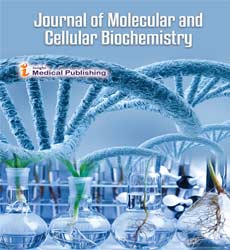New developments in biologic approaches to articular cartilage regeneration
Abstract
Statement of the Problem: Osteoarthritis (OA) is the most common cause of disability with one in three adults of working age having arthritis-attributable work limitations. In at least 12% of patients with symptomatic OA, the cause is joint injury that progressed over time to post-traumatic OA. Human adult articular cartilage has a limited innate ability to regenerate. Currently, no methodology is able to restore native structure and function of hyaline cartilage, though various approved surgical procedures lead to temporarily improved clinical outcomes. Furthermore, it is unclear whether the restoration of native cartilage structure is necessary for symptomatic improvement. In this presentation we will discuss new experimental biologic developments in the field of cartilage regeneration. Methodology & Theoretical Orientation: We will provide an overview of new technologies tested in vitro and in vivo in animal models and in Phase-I clinical studies. We will also comment on existing clinical trials and discuss potential therapies for cartilage regeneration. Findings: New technologies aimed to regenerate cartilage usually involve cells growth and differentiation factors, a scaffold or graft, or combination therein. When addressing the question of cartilage regeneration it is critical to consider integration with surrounding cartilage tissue and subchondral bone. Cell sources for cartilage regeneration have included bone marrow mesenchymal stem cells (BM-MSCs, MSCs), umbilical cord cells, embryonic stem cells, human placental membrane and adipose derived MSCs, to name a few. Some approaches, like osteochondral grafts and minced cartilage products, have a benefit of the existing native matrix structure; though they are expensive and have low availability. To address regeneration of the osteochondral unit the focus has shifted to acellular scaffolds, preferably heterogeneous, that combines two distinct layers corresponding to the cartilage and bone to enable simultaneous regeneration of both tissues. One example of such scaffold that has been extensively tested in our laboratory and in animal models and human clinical trials is Agili-C (CartiHeal, Israel). Conclusion & Significance: A number of new and exciting technologies are being developed for cartilage regeneration. However, one of the biggest challenges is the translation into the clinic.
Open Access Journals
- Aquaculture & Veterinary Science
- Chemistry & Chemical Sciences
- Clinical Sciences
- Engineering
- General Science
- Genetics & Molecular Biology
- Health Care & Nursing
- Immunology & Microbiology
- Materials Science
- Mathematics & Physics
- Medical Sciences
- Neurology & Psychiatry
- Oncology & Cancer Science
- Pharmaceutical Sciences
